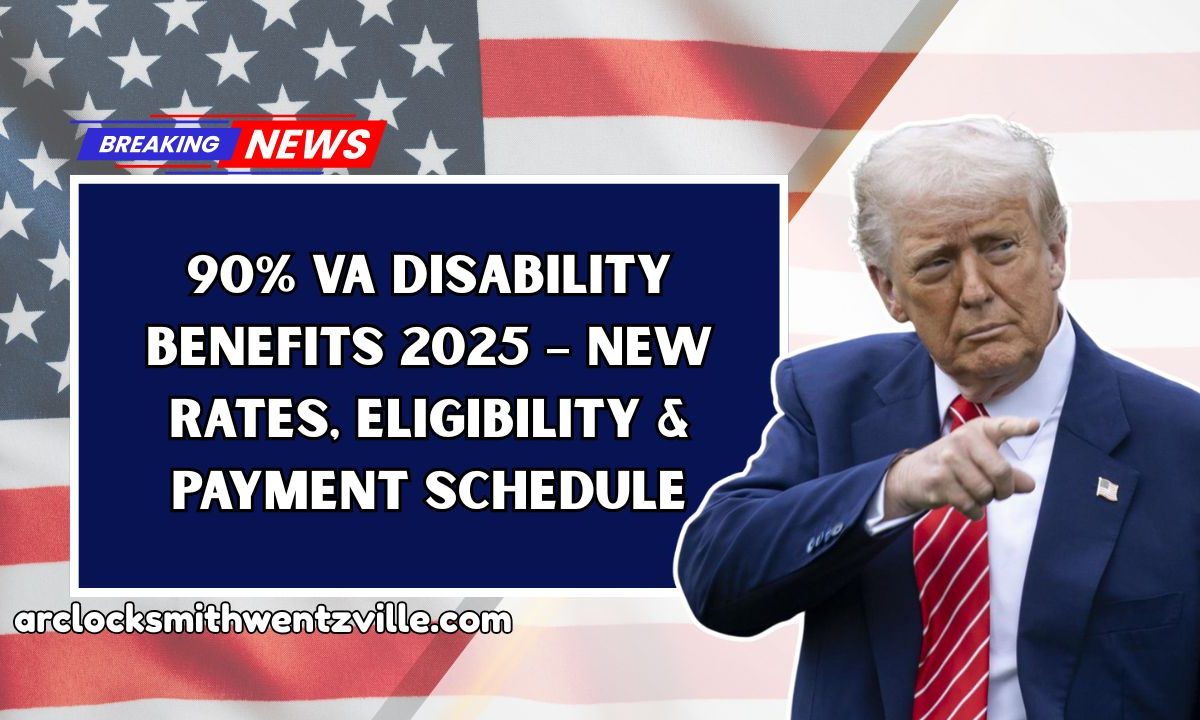The U.S. Department of Veterans Affairs (VA) has confirmed that veterans with a 90% disability rating will see higher monthly benefits in 2025.
This adjustment is part of the government’s continued effort to ensure that veterans living with service-connected disabilities receive financial support that reflects both inflation and the unique challenges they face.
For thousands of veterans, this means greater financial security, better access to healthcare, and more resources for everyday living.
Why the Update Was Introduced
The update for 2025 VA disability rates comes at a critical moment. Disabled veterans often face:
- Rising medical expenses from ongoing treatments and prescriptions.
- Housing and utility costs that continue to climb with inflation.
- Employment challenges due to physical or psychological limitations.
By raising benefits for the 90% disability category, the VA aims to provide more adequate financial relief, addressing both short-term and long-term needs.
Current Benefits for 90% Disability (Before 2025)
As of 2024, veterans rated at 90% disability received around $2,241 per month (without dependents). This could increase if veterans had:
- A spouse, children, or dependent parents.
- Eligibility for Special Monthly Compensation (SMC).
- Aid and Attendance (A&A) support for daily living assistance.
However, these payments lagged behind inflation, creating pressure on families.
2025 VA Disability Pay for 90% Rating
Here’s a projected table of 90% disability rates in 2025:
| Dependent Status | Monthly Amount (2024) | Expected 2025 Amount* |
|---|---|---|
| Veteran Alone | $2,241 | $2,340–$2,365 |
| Veteran with Spouse | $2,404 | $2,505–$2,525 |
| Veteran with Spouse & Child | $2,525 | $2,630–$2,655 |
| Veteran with 1 Parent | $2,359 | $2,455–$2,480 |
| Veteran with 2 Parents | $2,478 | $2,580–$2,605 |
| Add per Additional Child | +$85 | +$90 approx. |
Who Qualifies for 90% Disability Benefits?
Not every veteran automatically qualifies for these payments. Eligibility depends on the VA’s disability rating system.
1. Requirements:
- Must be an honorably discharged U.S. veteran.
- Disability must be service-connected (physical or mental condition caused or aggravated by military service).
- VA must officially assign a 90% rating after reviewing medical evidence.
- Conditions often include PTSD, traumatic brain injuries (TBI), hearing loss, or chronic illnesses.
Veterans may also undergo periodic re-examinations to maintain eligibility.
Additional Support Beyond Monthly Payments
Apart from monthly compensation, veterans rated at 90% disability in 2025 may also qualify for:
- VA Health Care Coverage: Free or reduced-cost medical services and prescriptions.
- Vocational Rehabilitation & Employment Services: Job training and career support for those able to work.
- Housing Adaptation Grants: Assistance in modifying homes for mobility or safety.
- Caregiver Benefits: Stipends and training for family members who provide full-time care.
These programs are designed to provide holistic support, not just financial aid.
Challenges and Criticism
While the 2025 increase is welcome, some concerns remain:
- Veterans argue that 90% disability is close to full disability, but benefits are significantly lower than the 100% rating.
- Advocacy groups push for automatic upgrades to 100% disability in severe cases.
- Processing delays within the VA can sometimes postpone payments for months.
The VA has pledged to streamline claims processing and ensure timely disbursements.
Payment Schedule for 2025
VA disability compensation is paid monthly, typically on the first business day of each month. For 2025:
| Month | Payment Date |
|---|---|
| January | 2 Jan 2025 |
| February | 3 Feb 2025 |
| March | 3 Mar 2025 |
| April | 1 Apr 2025 |
| May | 1 May 2025 |
| June | 2 Jun 2025 |
| July | 1 Jul 2025 |
| August | 1 Aug 2025 |
| September | 2 Sep 2025 |
| October | 1 Oct 2025 |
| November | 3 Nov 2025 |
| December | 1 Dec 2025 |
What Veterans Should Do Now
To maximize their benefits in 2025, veterans should:
- Check VA updates for official payment tables.
- Verify dependent details with VA to ensure correct rates.
- Apply for Individual Unemployability (IU) if unable to work — this can raise compensation to 100% disability equivalent.
- Use Veterans Service Organizations (VSOs) for assistance with claims.
The 90% VA disability benefits update for 2025 is a crucial step in ensuring veterans receive fair financial support.
With payments expected to rise to about $2,340–$2,365 per month, plus higher allowances for dependents, the adjustment reflects the impact of inflation and the rising cost of living.
While challenges remain — including the gap between 90% and 100% disability compensation — the increase shows the government’s commitment to America’s veterans.
By staying informed, verifying details, and exploring programs like Individual Unemployability and housing grants, veterans and their families can make the most of these benefits.
The 2025 update is more than just numbers; it’s about honoring the sacrifices of veterans and ensuring they have the resources to live with dignity.
FAQs
How much will 90% disabled veterans receive in 2025?
They are expected to receive around $2,340–$2,365 per month without dependents, with higher amounts for spouses, children, or parents.
Are VA disability benefits tax-free?
Yes. All VA disability benefits are completely tax-free, meaning veterans keep the full amount.
Can veterans with 90% disability apply for 100% benefits?
Yes. Through Individual Unemployability (IU), veterans who cannot work due to service-connected disabilities may qualify for 100% equivalent pay.




